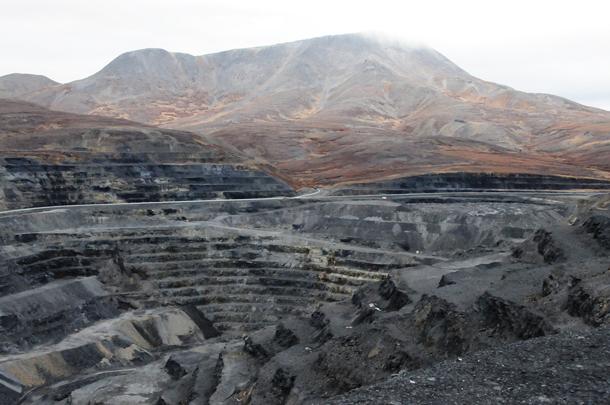The most toxic town in America
The Red Dog Mine is the source of most of the toxic pollution near Kotzebue, Alaska. Opened in 1989, the mine is the largest producer of zinc worldwide and is expected to stay open until 2031.
The Environmental Protection Agency named Kotzebue, Alaska, the worst industrially polluted town in the United States earlier this year. The not-so-bragworthy distinction came from an annual EPA data set called the Toxics Release Inventory.
The contamination does not originate within Kotzebue itself. It comes from the Red Dog Mine, located about 80 miles away. The Red Dog Mine produces more than 750 million pounds of toxins annually and is one of the world’s largest lead and zinc mines. While Kotzebue is the town listed on the EPA inventory, the environmental impact may be even stronger in the Native Alaskan villages of Kivalina and Noatak, which are much closer to the mine itself.
“The primary problem is that, due to the huge fugitive dust emissions and releases of toxic chemicals to the streams and rivers downstream from the mine, the lands and waters are contaminated with heavy metals,” says Pamela Miller, executive director of Alaska Community Action on Toxics, a nonprofit advocacy group. “These are lands that have been used for generations by the Native communities in the region for subsistence. So, the gathering of greens and berries, the gathering of medicinal plants, the hunting of animals such as caribou and fish and beluga — all of these are [done] downstream or downwind from the mine.”
Because the community is so remote, there have been no detailed assessments of the mining operations’ impact on public health, although the toxins associated with Red Dog Mine are known to cause kidney disorders and neurological problems.
Miller and her group have been working on this issue since 2004 when they produced an investigative report about the contamination from the mine. They also pursued litigation to control contamination through the Clean Air Act and the Clean Water Act, two pieces of federal legislation that helped reduce the fugitive dust emissions and releases to surface waters.
“They have controlled some of their releases through the creation of storage ponds and tailings, but these simply slow down the releases further downstream,” Miller explains of the mine. “This is a problem that will persist for many generations to come because I don’t believe the corporation will be held accountable for responsible cleanup of this site. It’s a Superfund site in the making.”
In the long term, she says, environmental agencies “need to make sure that when this mine shuts down, the corporation does not leave the land in a contaminated state, so we don’t have contamination in perpetuity.”
People in the community also disagree about the mine’s impact on local jobs. Some claim it creates jobs; others say it destroys them. Miller sides with the latter group.
“This mine actually provides very few jobs to local people, and I think the economic benefits are way overblown,” she says. “I think much of the revenue generated from the mining of heavy metals from the Red Dog Mine actually benefits a foreign corporation based in Canada. I don’t see that the local communities benefit very directly whatsoever.”
This article is based on an interview that aired on PRI’s Living on Earth with Steve Curwood.
Our coverage reaches millions each week, but only a small fraction of listeners contribute to sustain our program. We still need 224 more people to donate $100 or $10/monthly to unlock our $67,000 match. Will you help us get there today?
